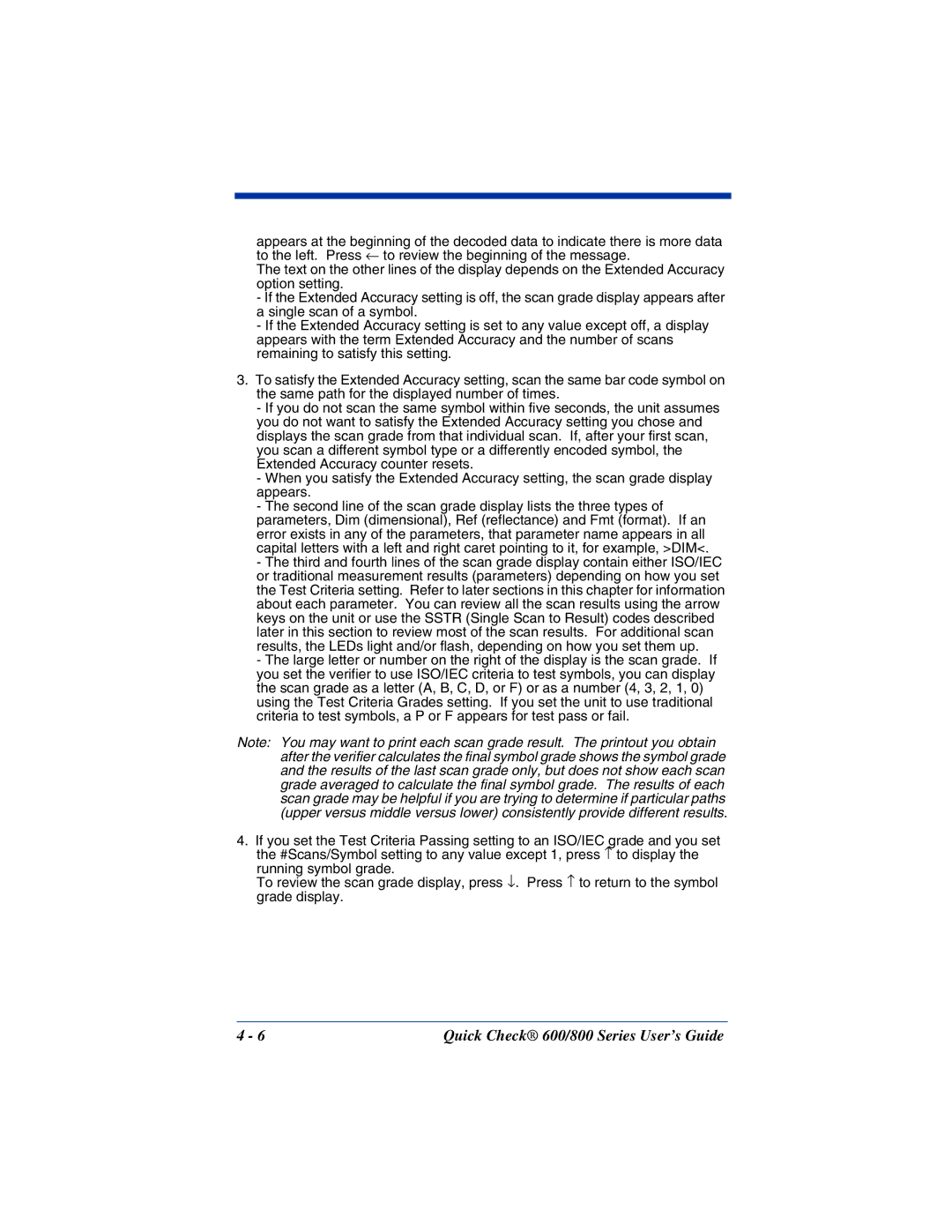
appears at the beginning of the decoded data to indicate there is more data to the left. Press ← to review the beginning of the message.
The text on the other lines of the display depends on the Extended Accuracy option setting.
-If the Extended Accuracy setting is off, the scan grade display appears after a single scan of a symbol.
-If the Extended Accuracy setting is set to any value except off, a display appears with the term Extended Accuracy and the number of scans remaining to satisfy this setting.
3.To satisfy the Extended Accuracy setting, scan the same bar code symbol on the same path for the displayed number of times.
-If you do not scan the same symbol within five seconds, the unit assumes you do not want to satisfy the Extended Accuracy setting you chose and displays the scan grade from that individual scan. If, after your first scan, you scan a different symbol type or a differently encoded symbol, the Extended Accuracy counter resets.
-When you satisfy the Extended Accuracy setting, the scan grade display appears.
-The second line of the scan grade display lists the three types of parameters, Dim (dimensional), Ref (reflectance) and Fmt (format). If an error exists in any of the parameters, that parameter name appears in all capital letters with a left and right caret pointing to it, for example, >DIM<.
-The third and fourth lines of the scan grade display contain either ISO/IEC or traditional measurement results (parameters) depending on how you set the Test Criteria setting. Refer to later sections in this chapter for information about each parameter. You can review all the scan results using the arrow keys on the unit or use the SSTR (Single Scan to Result) codes described later in this section to review most of the scan results. For additional scan results, the LEDs light and/or flash, depending on how you set them up.
-The large letter or number on the right of the display is the scan grade. If you set the verifier to use ISO/IEC criteria to test symbols, you can display the scan grade as a letter (A, B, C, D, or F) or as a number (4, 3, 2, 1, 0) using the Test Criteria Grades setting. If you set the unit to use traditional criteria to test symbols, a P or F appears for test pass or fail.
Note: You may want to print each scan grade result. The printout you obtain after the verifier calculates the final symbol grade shows the symbol grade and the results of the last scan grade only, but does not show each scan grade averaged to calculate the final symbol grade. The results of each scan grade may be helpful if you are trying to determine if particular paths (upper versus middle versus lower) consistently provide different results.
4.If you set the Test Criteria Passing setting to an ISO/IEC grade and you set the #Scans/Symbol setting to any value except 1, press ↑ to display the
running symbol grade.
To review the scan grade display, press ↓. Press ↑ to return to the symbol grade display.
4 - 6 | Quick Check® 600/800 Series User’s Guide |
